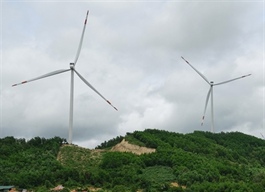Production revamp wanted in woodwork
Production revamp wanted in woodwork
Vietnam is becoming a destination for many woodworking machinery manufacturers seeking to cement partnerships with local partners.

Su Quan Wo, chairman of the Lun Jiao Woodworking Machinery Association in Guangdong, China, paid a visit to the southern province of Binh Duong last month to explore partnership opportunities.
He told VIR, “Vietnam has the potential, while China has the technology. Businesses of the two countries can cooperate to stimulate the development of Vietnam’s wood processing industry, as the US is trying to lessen its dependence on Chinese goods.”
According to Wo, China has supplied most of the woodworking machines for the Vietnamese market for many years, ranging from popular to modern and automated types, meeting cost and efficiency requirements. There is currently no Chinese manufacturer on the same scale as Germany’s Weinig and Homag or Italy’s SCM and Biesse.
Moreover, Chinese machines are about 20-30 per cent cheaper than their European competitors. The performance and stability of machines are almost the same, while usage and maintenance costs are lower.
“Vietnam is similar to China in the 1990s. The market is flooded with outdated woodworking machines,” Wo said. “The woodworking machinery industry only truly develops when the Chinese government outlines a clear strategy to support industry development, especially in each locality.”
In particular, Foshan is home to most of China’s largest woodworking machine manufacturers, while Shandong specialises in manufacturing machines that use industrial wood. Zhejiang and Sichuan also produce woodworking machines.
In previous years, Wo’s presentation might have attracted the attention of Vietnamese wood processing companies. However, they are not very excited given that Vietnam’s furniture exports are slowing.
In the first eight months of 2023, Vietnam’s wood and timber product industry reached an export value of $7.78 billion. There is not long left to achieve the target of $17 billion set for the year.
According to Nguyen Phuong, general director of Minh Thanh Company in the southern province of Dong Nai, the company has made a comprehensive investment in modern wood processing machines to comply with the quality requirements of the export markets, and the company adopts European technology.
This is a testament to Minh Thanh’s efforts in investing in machinery and equipment. On the other hand, it touches on the most worrying problem facing wooden furniture manufacturers today: investing in technology to increase productivity, product quality, and profits.
“China’s wood industry is expanding its operation to countries in the region, such as Vietnam, Malaysia, and Thailand, which have good human resources,” said David Chen, general director of ZongFu Ying in Foshan. “We hope to share our machinery manufacturing experience with Vietnamese partners. This helps promote the production capacity of both sides.”
“Over the past five years, Vietnam’s wood industry has overtaken Malaysia in its automation level. The localisation rate of woodworking machines is also increasing in Vietnam, but it is just the beginning. Vietnamese manufacturers still have to go through processes of learning, testing, and improving products.”
Thanks to the positive growth momentum over many years, Vietnam has become the world’s second-largest wood processing and export centre, after China.
However, Le Duc Hieu, director of wood processing machinery group Vetta Company, said, “While many Vietnamese wood furniture manufacturers with the financial capability have accumulated money to invest in modern machines as well as software for smart manufacturing, only about 10 per cent of businesses actually make investments to change production methods.”
According to Hieu, some companies make separate investments by replacing priority parts of machinery. These investments bring relatively good results and improve productivity to some extent.
“However, Vietnam’s wood processing industry is still inferior to its regional peers. The industry remains fragmented in terms of creating a smart and efficient production process. However, there are very few domestic businesses investing in this closed-loop production process,” Hieu said.























